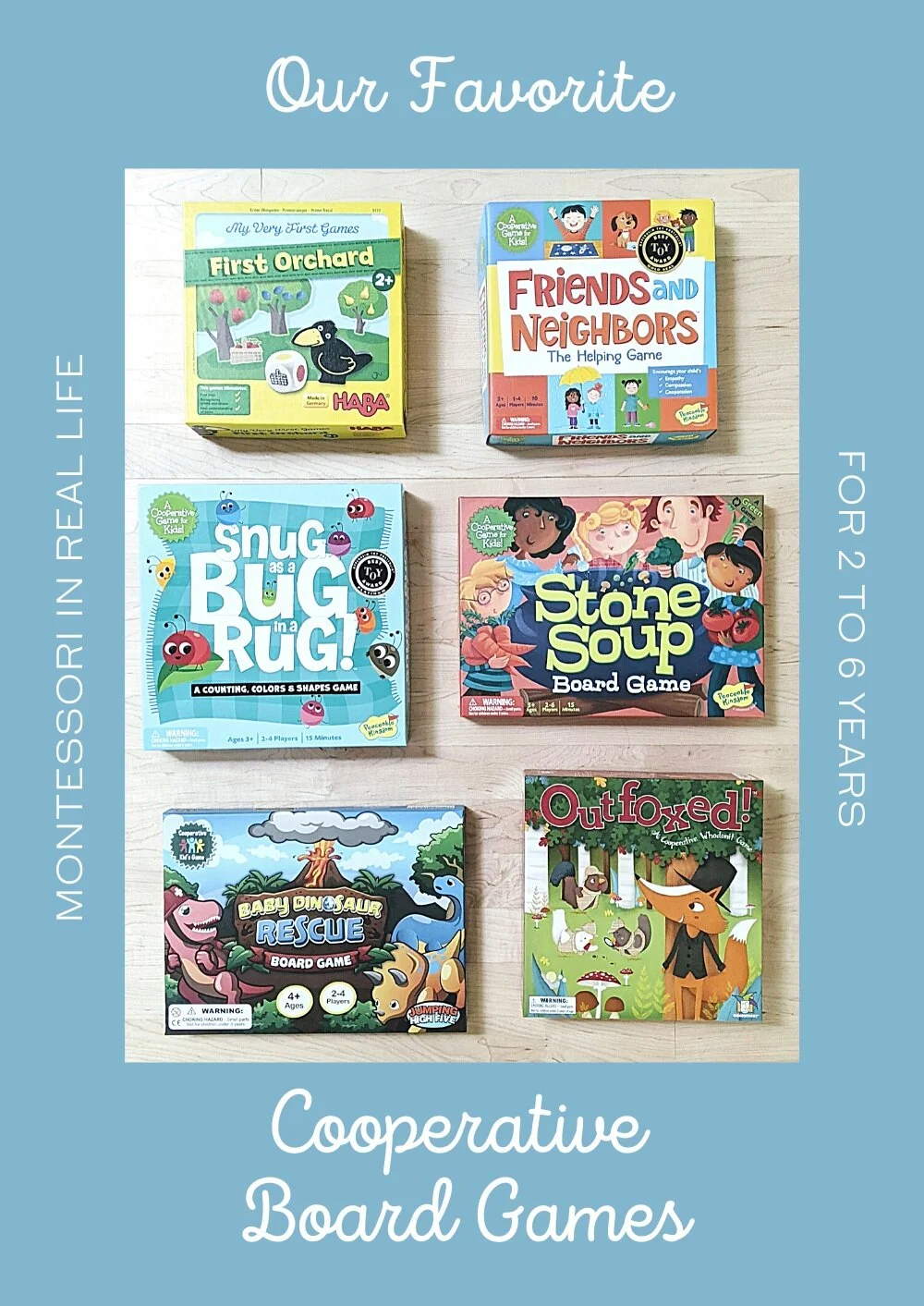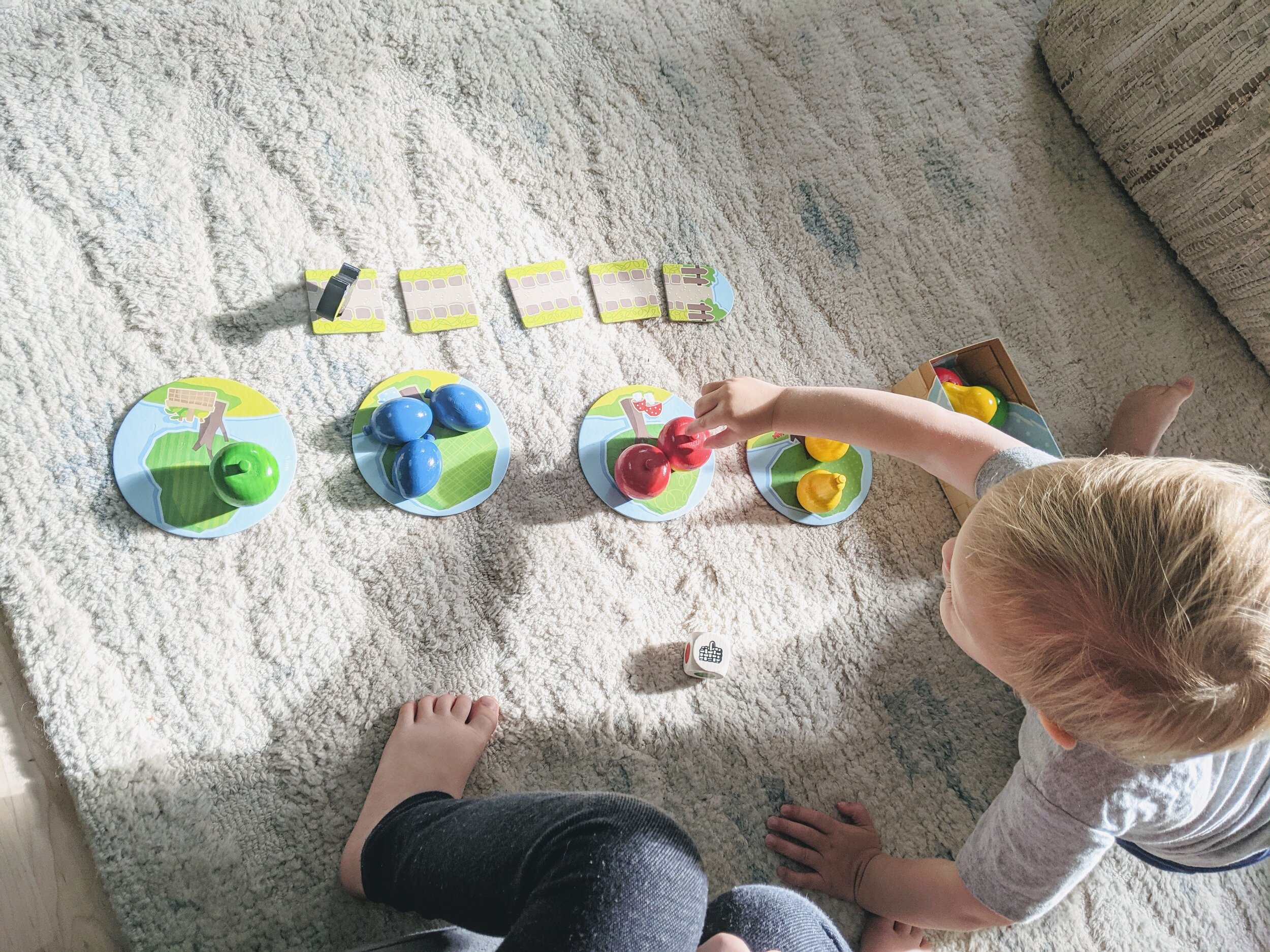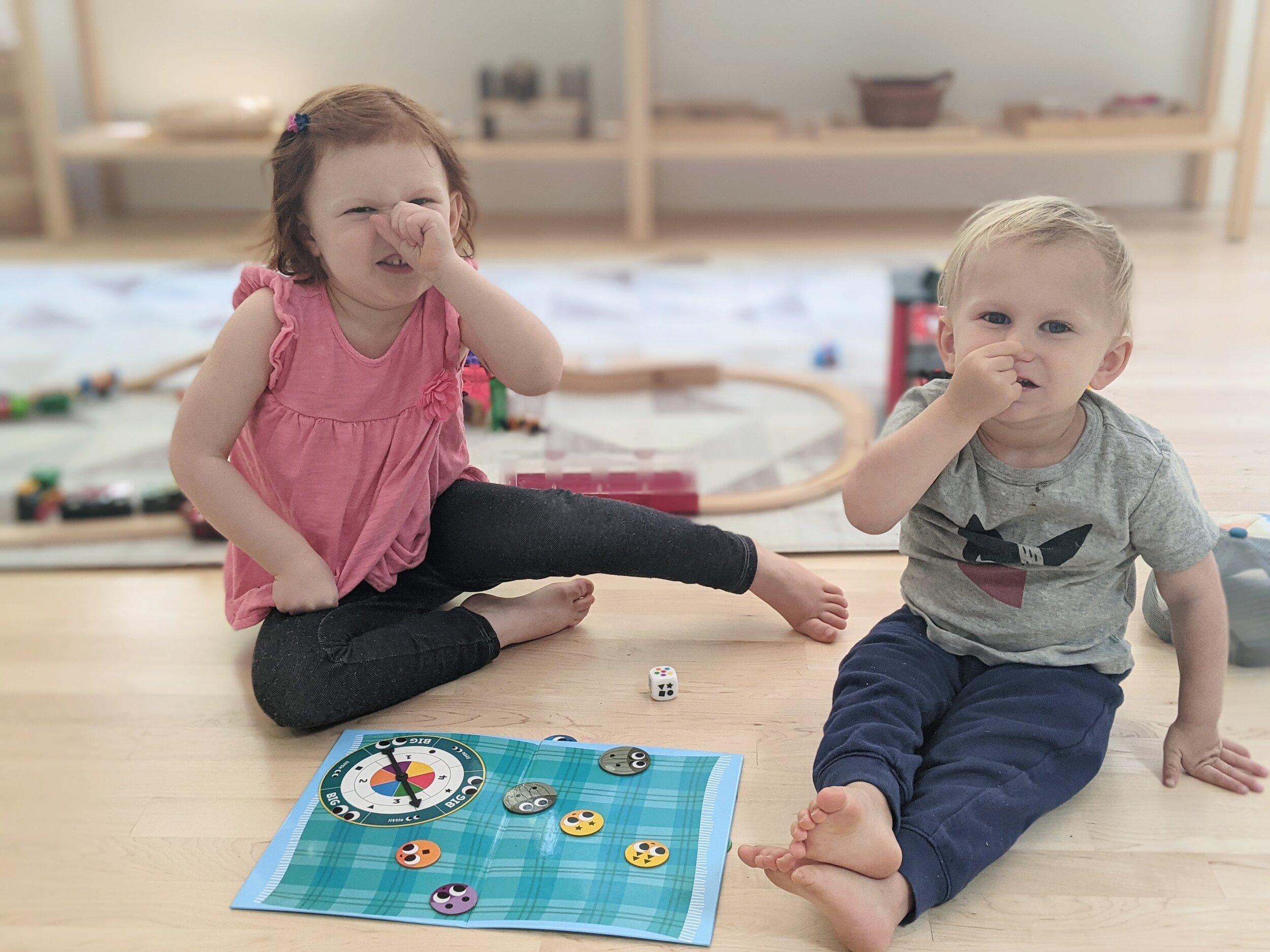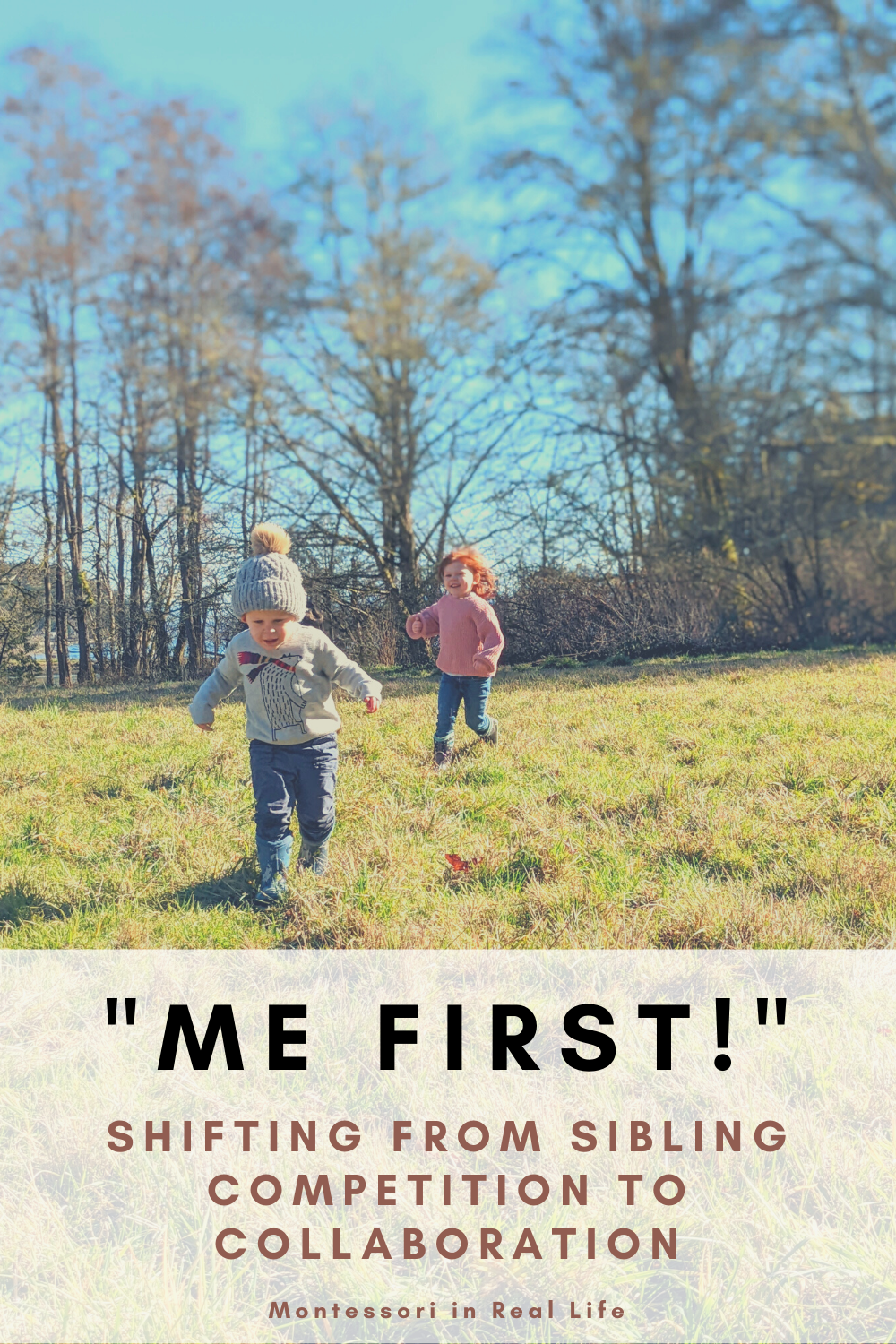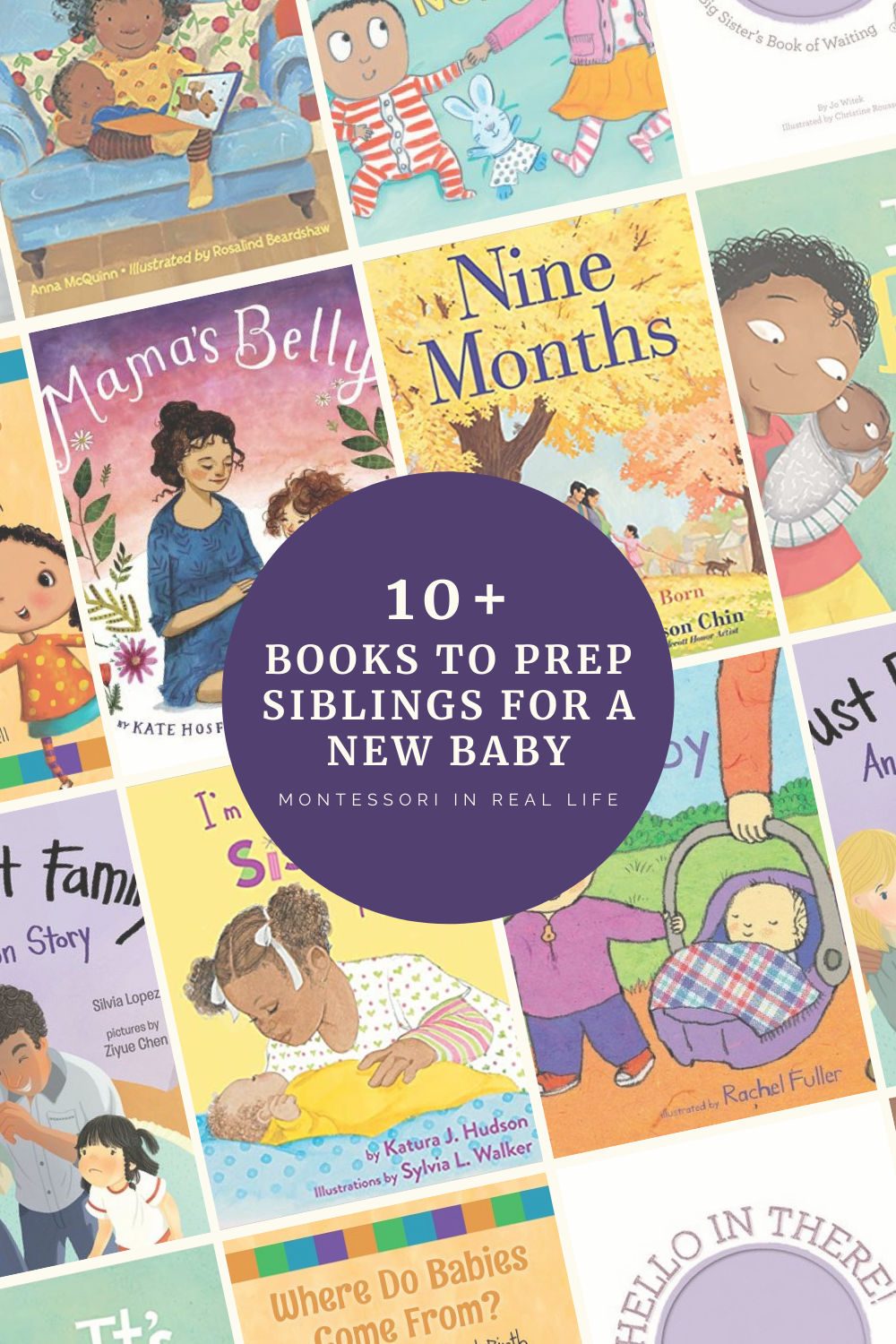Our Favorite Cooperative Board Games
Montessori in Real Life
We love cooperative board games in our house! Board games in general have been a great way to spend 1:1 time with D and also fun to play as a whole family on the weekends. Cooperative games in particular offer a great alternative to traditional early board games like shoots and ladders or candy land.
Cooperative board games shift the focus from competition between players to working together against the board. Working together as a team helps the kids practice their communication and planning skills, as well as patience in taking turns. This plays out in the real world too. These games even impact the types of imaginative games D comes up with when playing with S or her friends.
I also find these games to be more enjoyable to play with the kids. They never end with “I win!” Or “I wanted to win!” Instead, we celebrate together, or simply try again!
This is a great first cooperative board game, best for toddlers ages 2 and up. The goal of this game is to fill the basket with colored apples before the raven reaches the orchard. The rules are simple: roll the die and if you land on a color, move the corresponding color apple to the basket. If you roll the raven, move the raven one step towards the orchard. This game helps with color recognition, sorting, and learning how to take turns. I also appreciate that in this game designed for toddlers, the pieces are large and wooden rather than small and cardboard.
This game says 3 and up but I’d say it’s best for ages 2 to 4. It has a sweet premise: to find the object that will help a friend or neighbor feel better. This ends up being mostly a matching game. The object of the game is to help all the friends before the stop sign fills up. Before the game starts, pick one board to fill together. Then take turns picking tokens out of the bag to see if the object on it helps someone on your shared board. If it does, you place it on your board; if not, you place it on the stop sign. It’s a simple game but starts some good conversations about community, helping, and emotions.
We don’t own this game but have heard wonderful things! This game is playable around age 3. This color-matching game doesn’t involve any reading, so it’s easy for even younger players to join in with a bit of assistance. In this game, the owls have ventured out during the night and want to fly home before sunrise. Take turns drawing cards and move an owl of your choice to the corresponding color on the board. When you draw a sunlight card instead of a color card, daylight draws a bit nearer. Everyone works together to move all of the owls home before daybreak.
This game has three levels of play, making it great for 3 to 5 year olds. The object of this game is to help all the little bugs under the rug before the three stink bugs “stink up the place”. Each bug has four attributes: a specific color, shape, number, and size of eyes. In the basic version, you choose one attribute to look for, e.g. shapes and in more challenging versions, you roll a die to pick a new attribute each turn. Then spin the spinner and take turns finding bugs that match the specific color/number/shape/size you landed on. If there aren’t any bugs that match, a stink bug appears. It’s a silly but fun game that incorporates a lot of key concepts for preschoolers!
Their “Stink Bug” Faces :)
This game says 5 and up but I would say it can be enjoyed by 4-year-olds too. It is essentially a game of memory but the added twists actually make it quite fun. The goal of the game is to fill the hot cauldron with ingredients before the fire goes out. To start, all the pieces go face down on the board (this includes pairs of ingredients, a magic stone, and fire cards). Take turns picking up two cards, looking for matches, and you can help each other in the process! When you find a match, you add it to the “soup”. If you pick up a fire card, you add it to the fire. It’s a race to find all the ingredient pairs before the last fire card!
This is another game that has different versions/levels so that it can be enjoyed at different ages, though I’d say 4 is a good starting age. The object of this game is to get all the baby dinosaurs to the island before the lava reaches them. This game involves both playing cards and the board. Each time you take a turn and play a card, you either move one of the baby dinosaur tokens forward on the path toward the island or get the lava closer to the valley. This game involves some strategy, as you figure out which baby dinosaur to move along the board and when to play certain cards from your hand. This is when collaborative games really shine, as you can help each other make decisions rather than competing alone!
This is the most advanced game of the bunch, but a 4-year-old can play and enjoy this with their grown-ups. In this game, a sneaky fox has stolen a pot pie and it’s up to you to work solving clues to solve the mystery of who is guilty This game involves a lot of pieces including a board, cards, dice, tokens, and figurines. Each round reveals a clue as to which of the foxes stole the pie based on what they are wearing or holding. There are fun surprises along the way and children love playing detective! I like that there isn’t anything scary about this “whodonit” game while still being a fun mystery to solve.
These are the cooperative board games we have enjoyed in our family so far! I know there are many others, and I look forward to playing even more as our kids get older! What are your favorite board games to play with your kids right now?
Note: This post contains affiliate links. If you purchase a product through one of these links, you won’t pay anything extra, but I will get a small commission, which helps keep this blog going. Thanks for supporting Montessori in Real Life!
